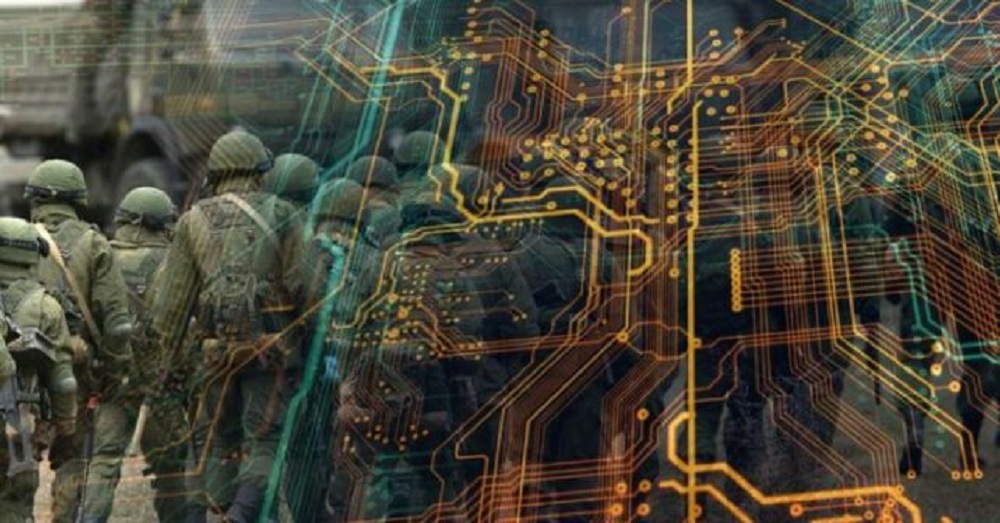“Tomorrow’s conflicts will not be easily categorized into conventional or irregular. The emerging character of conflict is more complicated than that. A binary choice of big and conventional versus small or irregu- lar is too simplistic.”—Frank Hoffman
In the 21st century, the realities of conflict and the traditional concepts of war are misaligned. Ever since the end of Cold War and the emergence of a unipolar world, there has been a shift of paradigms. Hybrid war means the use of conventional and unconventional methods to achieve warlike ends resulting in subversion or coercion. The term “hybrid warfare” has gained popularity ever since Russia’s annexation of Crimea and fomenting of instability in Eastern Ukraine. Examples of hybrid warfare can be found long in the past, stretching back to the Peloponnesian War, formidable armies like Napoleon’s Grand Army and Hitler’s Wehrmacht struggling to
combat irregular fighters who exploited vulnerable logistic bases and lines of communication.
Recent definitions of hybrid warfare are similar to Chinese theory of unrestricted warfare involving hacking, markets, and subversion of banking system, manipula- tion of currency, media disinformation, urban warfare and terrorism. The use of this term gained currency in the 2000s to describe contemporary warfare, particularly because of the increasing sophistication and lethality of violent non-state actors and the growing potential of cyber warfare. Techniques like this are used with the intention to paralyse the decision making processes by spreading confusion and preventing the target from responding forcefully because of the absence of “authentic” military targets.
Hybrid war employs a wide spectrum of conventional and sub-conventional tools for warfighting. If these tools of hybrid warfare are employed at the same time, the impacts can be catastrophic. It can lead stable states to turn into a chaotic mess in a matter of minutes.
A major principle of warfare is that non-military targets are avoided. But hybrid warfare has the advantage that an adversary is able to engage both military and non-mil- itary targets simultaneously. Hybrid warfare is political and diplomatic in nature as well, along with being military. As the Prussian general and military theorist Carl von Clausewitz famously said, “War is the continuation of politics by other means”. Exploitation of information is one of the most dangerous tools of hybrid warfare. This information exploitation can play a vital role to disrupt societies, where the right use of information can be imperious. In this situation, the role of social media is greatly enriched, where misinformation, fake news and propaganda are being broad- casted to achieve concealed political motives. The strategic benefit of hybrid warfare is that it disguises the involvement of the aggressor.
Coercive diplomacy is another critical tool and strategy of hybrid warfare. It is used by great powers through economic means. In order to subdue a country’s economic integrity, the powerful countries impose trade restrictions, economic sanctions and enforce critical economic conditions through International Monetary Fund (IMF) and Financial Action Task Force (FATF) to achieve malicious intents.
For example, the foreign policy of United States includes use of force and threat as essential pillars. The superpower has unilaterally, multilaterally, and through international institutions placed sanctions on states which opposed its interests or acted against international norms and human rights.
The basis for imposition of economic sanctions is also laid out in the United Nations (UN) Charter. Article 41 of the Charter’s chapter 7 allows the UN to place sanctions on the states to force them to comply with the UN Resolutions and Conventions. These sanctions involve severing of diplomatic, trade, or communi- cation links.
Article 42 of the same chapter allows the use of force against an aggressor or a state whose acts threaten international peace and stability. However, these measures cannot be used against the permanent members of the UN a clear example of discrimination build into the international system.
Ever since Pakistan came into existence, it has been facing a number of internal and external threats. The aim has always been to weaken the country and to “Balkanise” Pakistan into different parts. General Qamar Javed Bajwa, the Pakistani Chief of Army Staff says a hybrid war had been imposed on Pakistan to internally weaken it, but observes that the adversaries has consistently failed to divide the country on the basis of ethnicity and other identities.
Pakistan’s nuclear weapons program has served as a majordeterrence. These nuclear weapons have been acquired by Pakistan to deter Indian aggression. In May 2012, when Pakistan checkmated Indian Cold Start Doctrine by testing its low yield, short range, nuclear capable Nasr missile, the then Director General of Strategic Plans Division, Khalid Ahmed Kidwai called the missile a “weapon of peace” that had consolidated Pakistan’s Full Spectrum Deterrence (FSD).
The Indo-US-China tug of war for influence in the region is meant to yield as much strategic and politico-economic impact in the region as possible. Since Pakistan’s development of nuclear weapons, India now understands that a conventional war cannot take place between the two neighbours. This belief elevated the hybrid war via media, subversion, diplomatic manoeuvres, and cyber warfare.










